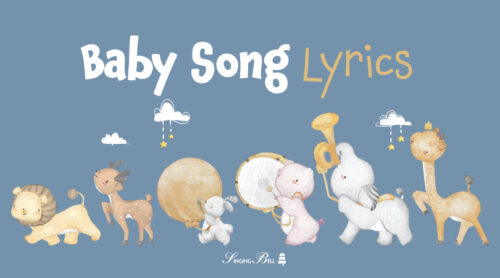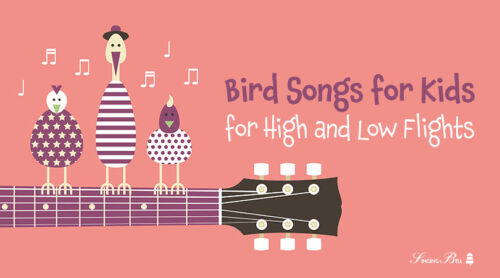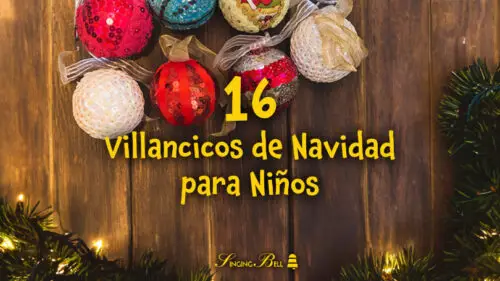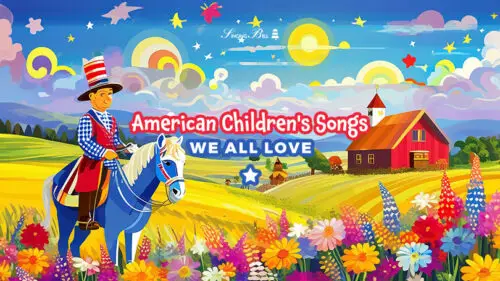
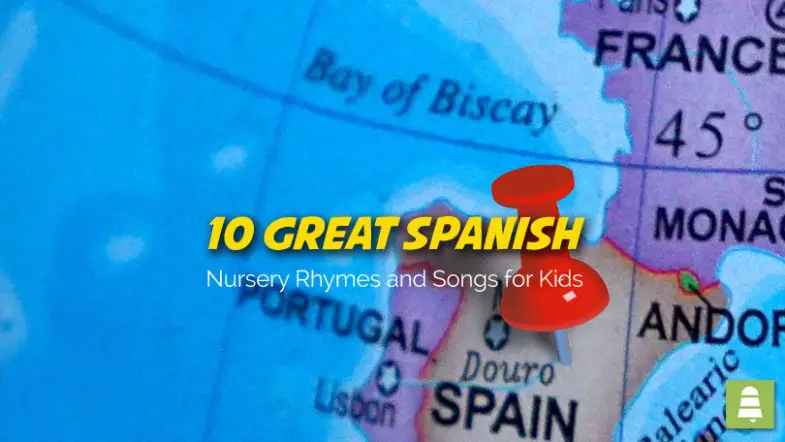
Popular children’s songs and nursery rhymes in Spanish have a global impact since they tend to spread throughout the entire Hispanic world, which consists of most of Central and South America – and, of course, Spain.
And this has been true for centuries.
Below are some of such kiddies’ tunes that are now sung in the Spanish language and enjoyed internationally.
Table of Contents
- La Cucaracha
- Cucú Cantaba La Rana
- Los Pollitos Dicen pío pío pío
- ¿Dónde Están las Llaves?
- A mi Burro
- La Vaca Lola
- A la Nanita Nana
- El Cocherito Leré
- Debajo del Botón
- Cinco Lobitos
- All our Nursery Rhymes in Spanish
1.
La Cucaracha
The exact origins of this song are unknown except that it has come from Spain. What is known is that it has been in existence for at least two centuries. However, the lyrics of the catchy “La Cucaracha” are often modified to fit the occasion it is being used for. In other words, it is not always used as a children’s song.
Some versions focus on more-serious subject matters, such as history or even politics. But the most-popular iteration of the tune is the one you will find below, which features the humorous tale of a tormented yet dance-loving cockroach.
La cucaracha, la cucaracha,
ya no puede caminar
porque no tiene,
porque le faltan
las dos patitas de atrás.Dicen que la cucaracha
Es un animal pequeño
Y cuando entra en una casa
Se tiene que quedar dueño.La cucaracha, la cucaracha,
ya no puede caminar
porque no tiene,
porque le faltan
las dos patitas de atrás.Cuando uno quiere a una
Y esta una no lo quiere,
Es lo mismo que si un calvo
En la calle encuentra un peineLa cucaracha, la cucaracha,
ya no puede caminar
porque no tiene,
porque le faltan
las dos patitas de atrás.
Printable La Cucaracha Lyrics for Kids in English and Spanish
2.
Cucú Cantaba La Rana
“Cucú Cantaba La Rana” has been with us for hundreds of years.
As with most traditional songs, the tune that is popular today is a modified version of the original. This song originated from Spain and is generally believed to have been composed back in the 17th century. And from there, it has become popular in the rest of the Spanish-speaking world.
The story of the song in its modern iteration is a rather simple one. It involves a frog who happily sings as various people pass her by. However, she is ultimately disappointed when she asks a sailor who is selling rosemary for a small piece of the plant, but he refuses.
Cucú, cucú cantaba la rana
Cucú, cucú debajo del agua.
Cucú, cucú pasó un caballero
Cucú, cucú con capa y sombrero.
Cucú, cucú pasó una señora
Cucú, cucú con traje de cola.
Cucú, cucú pasó un marinero
Cucú, cucú vendiendo romero.
Cucú, cucú le pidió un ramito.
Cucú, cucú no le quiso dar.
Cucú, cucú y se echó a llorar
Printable Lyrics to Cucú Cantaba La Rana
3.
Los Pollitos Dicen pío pío pío
“Los Pollitos Dicen pío pío pío” is a children’s song hailing from Spain but throughout the generations has become popular in other parts of the Latin world, such as Ecuador and Colombia. In fact its fame has been compared to that of “Twinkle Twinkle Little Star” in the English-speaking world.
Like most folk songs, the time and date of the composition of “Los Pollitos Dicen” is unknown. However, it is still beloved by parents and children to this day due to its easy-to-follow lyrics. In fact, the song is sometimes used to even teach adults Spanish.
The lyrics of the tune are also very family-friendly, as they center around the dependency of “little chickens” on their mother hen.
1. Los pollitos dicen
pío pío pío
cuando tienen hambre
cuando tienen frío.2. La gallina busca
el maíz y el trigo
les da la comida
y les presta abrigo.
Printable Lyrics to Los Pollitos Dicen pío pío pío
4.
¿Dónde Están las Llaves?
There seems to be some debate as to whether this song originated in Spain or Italy. Logic would dictate the former, since the song is extremely-popular in Spanish-speaking countries. However, it actually originated in France under the name “Ah! Mon beau château!” – and it dates as far back as the 19th century.
This song has a strong party vibe as in it is designed to be sung in groups. If the modern iteration of the song is translated literally it seems to have somewhat of a dark meaning since words such as rile and kill are used. However, this is a mistranslation of the original French, which is completely innocent.
1. Yo tengo un castillo,
Matarile, rile, rile.
Yo tengo un castillo,
Matarile, rile, ron – chimpón2. ¿Dónde están las llaves?
Matarile, rile, rile.
¿Dónde están las llaves?
Matarile, rile, ron – chimpón.3. En el fondo del mar,
Matarile, rile, rile.
En el fondo del mar,
Matarile, rile, ron – chimpón.4. ¿Quién irá a buscarlas?
Matarile, rile, rile.
¿Quién irá a buscarlas?
Matarile, rile, ron – chimpón.5. (que) irá (nombre de niño/a),
Matarile, rile, rile.
Irá (nombre de niño/a),
Matarile, rile, ron – chimpón.6. ¿Qué oficio le pondrá?
Matarile, rile, rile.
¿Qué oficio le pondrá?
Matarile, rile, ron – chimpón.7. Le pondremos (oficio, e.g. peluquera),
Matarile, rile, rile.
Le pondremos (oficio, e.g. peluquera),
Matarile, rile, ron – chimpón.8. Este oficio tiene multa,
Matarile, rile, rile.
Este oficio tiene multa,
Matarile, rile, ron – chimpón.
Printable Lyrics to ¿Dónde Están las Llaves?
5.
A mi Burro
Little is known about the history of this song. All that is apparent is that it is popular throughout the Spanish-speaking world, including Spain itself, though depending on locality, it may be called by different names. “A mi Burro” centers on a donkey who is suffering from a variety of ailments. When this animal is taken to a doctor, the physician gives him a number of different items, including clothing and medicine, to help him feel better. And the lyrics are arranged in such a way that the song can be used in form of a game if sung in Spanish.
1. A mi burro, a mi burro
le duele la cabeza
y el médico le ha dado
una gorrita gruesa
una gorrita gruesa
mi burro enfermo está
mi burro enfermo está2. A mi burro, a mi burro
le duelen las orejas
y el médico le ha dado
un jarro de cerveza
un jarro de cerveza
una gorrita gruesa
mi burro enfermo está
mi burro enfermo está3. A mi burro, a mi burro
le duele la garganta
y el médico le ha dado
una bufanda blanca
una bufanda blanca
un jarro de cerveza
una gorrita gruesa
mi burro enfermo está
mi burro enfermo está4. A mi burro, a mi burro
le duele el corazón
y el médico le ha dado
gotitas de limón
gotitas de limón
una bufanda blanca
un jarro de cerveza
una gorrita gruesa
mi burro enfermo está
mi burro enfermo está5. A mi burro, a mi burro
le duelen las rodillas
y el médico le ha dado
un frasco de pastillas
un frasco de pastillas
gotitas de limón
una bufanda blanca
un jarro de cerveza
una gorrita gruesa
mi burro enfermo está
mi burro enfermo está6. A mi burro, a mi burro ya no le duele nada,
el médico le ha dado jarabe de manzana,
jarabe de manzana,
un frasco de pastillas
gotitas de limón
una bufanda blanca
un jarro de cerveza
una gorrita gruesa
mi burro sano está
mi burro sano está
mi burro sano está
mi burro sano está
Printable Lyrics to A mi Burro
6.
La Vaca Lola
Despite “La Vaca Lola” being a tremendously popular children’s song, not too much is actually known about its history. However, it seems to have originated in the South American country of Colombia. As such, it is sung in Spanish, which is the dominant language in that part of the world. The lyrics of the song are very simple and ideal for introducing children to some basic Spanish terms. The song is centered around the Spanish words for cow (vaca), head (cabeza) and tail (cola). And as you can probably deduce from the title, the name of the cow who is the subject of the song is Lola.
La vaca Lola, la vaca Lola,
Tiene cabeza y tiene cola,
La vaca Lola, la vaca Lola,
Tiene cabeza y tiene cola,
y hace “muu.”
Printable Lyrics to La Vaca Lola
7.
A la Nanita Nana
“A la Nanita Nana” originates from mid-19th century Spain but is now popular throughout the Hispanic world. Along the way, a number of people have worked on it to make it what it is today, but by and large, the work hasn’t been touched in over 100 years. This is a children’s lullaby, which was initially a Christmas carol, as the baby featured in it is named “Jesus”, based on the Biblical child of course. The song is addressed to his “nana” or caretaker. In it, she is being implored to join the singer in a lullaby to put the baby to sleep.
1. A la nanita nana,
nanita ella, nanita ella
Mi niño tiene sueño,
bendito sea, bendito sea2. Fuentecita que corre,
clara y sonora
Ruiseñor que en la selva,
cantando y llora
Calla mientras la cuna,
se balancea
A la nanita nana,
nanita ella
Printable Lyrics to A la Nanita Nana
8.
El Cocherito Leré
“El Cocherito Leré” has been credited to one of the greatest music composers in modern Spanish history, Carmelo Bernaola. The subject of this song is a girl named Maria. In it, she is being asked by someone who is driving a vehicle described as a “coach” if she would like a ride. However, she refuses by telling him that riding in such a vehicle makes her ill. Then the song ends with the spelling of the name Maria, letter-by-letter. It sounds somewhat like an old-school women’s empowerment song and is perfect for kids!
El cocherito leré
Me dijo anoche leré
Que si quería leré
Montar en coche leréY yo le dije leré
Con gran salero leré
No quiero coche leré
Que me mareo leré.El nombre de María
Que cinco letras tiene
La M, la A, la R
La I, la A: MARÍA
Printable Lyrics to El Cocherito Leré
9.
Debajo del Botón
“Debajo del Botón” is one of the most popular Spanish nursery rhymes in the entire Spanish-speaking world. That is because it is simple and catchy as well as clever. It tells the story of a button, a man, a mouse and a sock and uses repetition to keep children vested. Due to its simplicity and natural rhythm, it can also be sung by children of very-young ages as well as older people who just want to have a good time.
1. Bajo un botón, ton ton
que encontró Martín, tin tin
había un ratón, ton ton
ay que chiquitín, tin tin!2. Ay que chiquitín, tin tin
era el ratón, ton ton
que encontró Martín, tin tin
bajo un botón, ton ton.3. Es tan juguetón, ton, ton,
juguetón Martín, tin, tin
que metió el ratón, ton, ton,
en un calcetín, tin, tin.4. En un calcetín, tin, tin,
vive aquel ratón, ton, ton,
lo metió Martín, tin, tin,
porque es juguetón, ton, ton.
Printable Lyrics to Debajo del Botón
10.
Cinco Lobitos
“Cinco Lobitos” or five little wolves is a children’s song originating from Spain. As can be inferred from the name, this song can be used to teach counting – for instance, by using the fingers. It is very short, simple and modifiable. Although the song is very popular in Spain and is even sung to infants, like any classic folk song, its origins remain shrouded in mystery. That being said, due to its universal appeal, “Cinco Lobitos” is still likely to be around for many generations to come.
Cinco lobitos tiene la loba,
cinco lobitos detrás de la escoba.
Cinco parió y cinco crio,
y a todos ellos la leche les dio.
Printable Lyrics to Cinco Lobitos
All our Nursery Rhymes in Spanish
Here’s our entire collection of Spanish nursery rhymes, as well as children’s songs from Latin America.
Every post includes a free karaoke mp3 you can download and use for educational purposes.
You may also like:
Cumpleaños Feliz | La Canción de Cumpleaños (Karaoke)

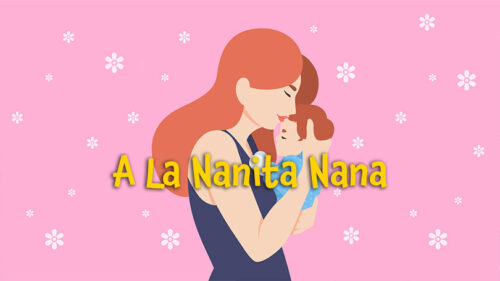 A la Nanita Nana
A la Nanita Nana 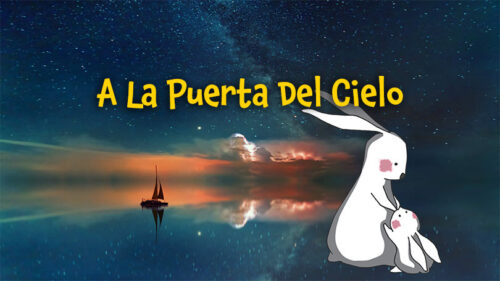 A la Puerta del Cielo
A la Puerta del Cielo 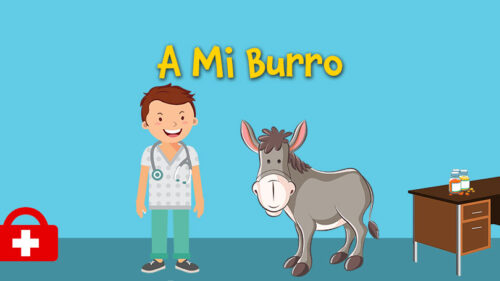 A mi Burro
A mi Burro 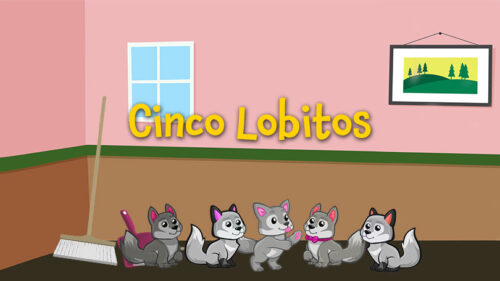 Cinco Lobitos
Cinco Lobitos 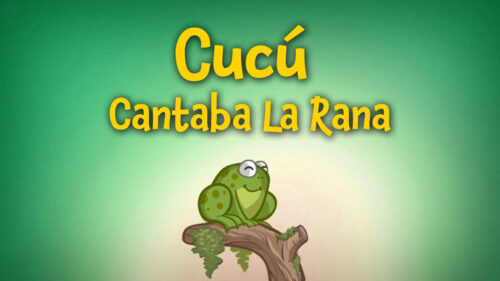 Cucú Cantaba La Rana
Cucú Cantaba La Rana 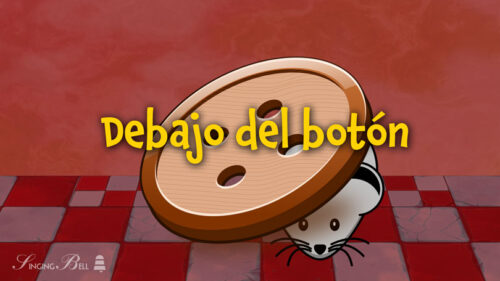 Debajo del Botón
Debajo del Botón 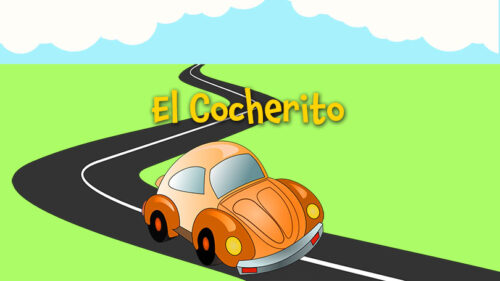 El Cocherito
El Cocherito 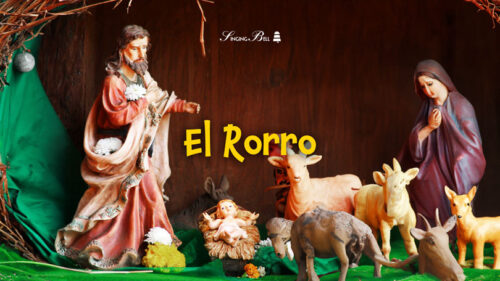 El Rorro
El Rorro 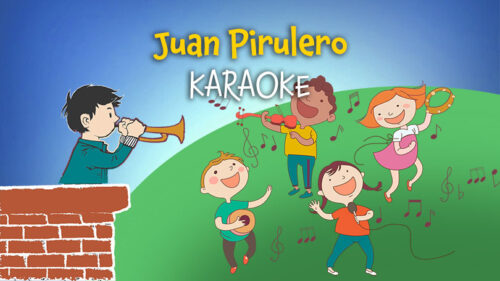 Juan Pirulero
Juan Pirulero 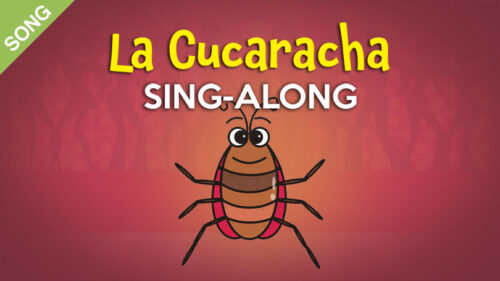 La Cucaracha
La Cucaracha 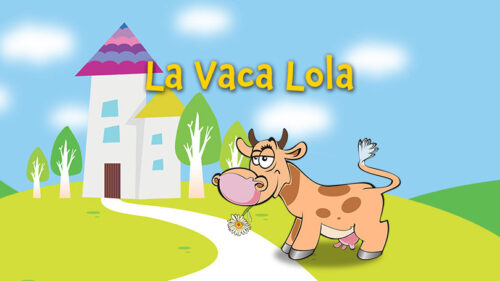 La Vaca Lola
La Vaca Lola 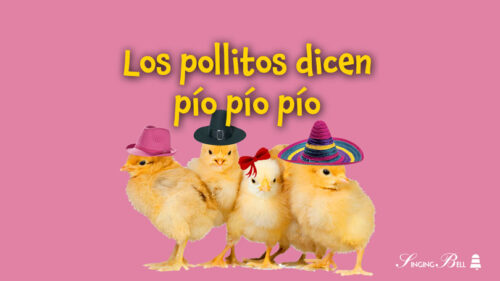 Los Pollitos Dicen pío pío pío
Los Pollitos Dicen pío pío pío 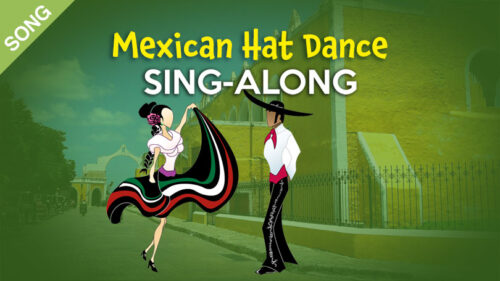 Mexican Hat Dance (Jarabe Tapatio)
Mexican Hat Dance (Jarabe Tapatio) 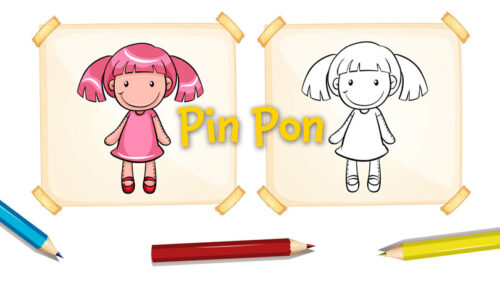 Pin Pon
Pin Pon 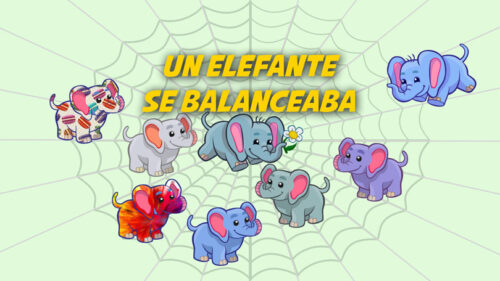 Un Elefante se Balanceaba
Un Elefante se Balanceaba 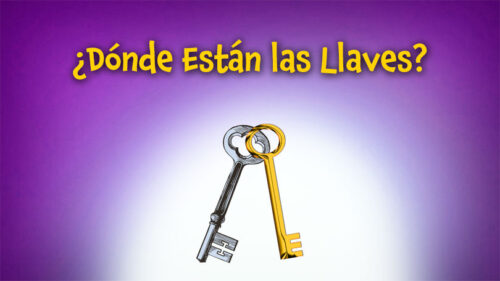 ¿Dónde Están las Llaves?
¿Dónde Están las Llaves? 